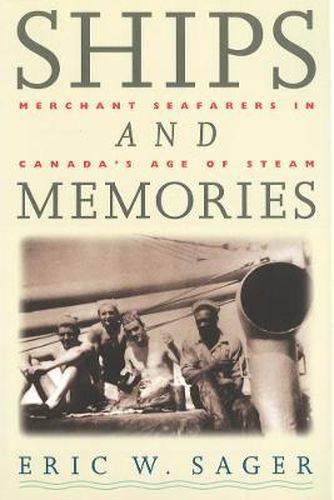Readings Newsletter
Become a Readings Member to make your shopping experience even easier.
Sign in or sign up for free!
You’re not far away from qualifying for FREE standard shipping within Australia
You’ve qualified for FREE standard shipping within Australia
The cart is loading…






Canadians live beside three great oceans and ships have been part of Canadian history for centuries. Yet very little is known about the men and women who have worked in Canada’ ocean fleets. This work allows the seafarers to tell their own stories. In their own words, they remember the good as well as the bad times, in peace and war, and during the depression. They reminisce about the dangers of seafaring, the loneliness aboard ship, and the difficulty of supporting families ashore, but they also recall rowdy adventures in port. They talk about the role that Canadian merchant ships played during the Second World War, they discuss the subsequent decline of the Canadain merchant navy and they comment on efforts to improve working conditions on Canadian ships. Eric Sager draws on interviews with master mariners, engineers, able seamen, cooks, stewards, and many others who worked in steamships between the 1920s and 1940s. Among them is Molly Kool, the first woman in Canada to earn a master’s certificate. The seafarers for the most part speak for themselves, but Sager also provides brief comments for each section in order to put the recollections into the context of their time. A large number of illustrations of life on board and on shore add a visual dimension to the reminiscences. It provides details of life at sea during the age of steam. It should be of interest to anyone curious about this part of Canada’s past as well as to scholars in history, sociology, folklore, and industrial relations.
$9.00 standard shipping within Australia
FREE standard shipping within Australia for orders over $100.00
Express & International shipping calculated at checkout
Canadians live beside three great oceans and ships have been part of Canadian history for centuries. Yet very little is known about the men and women who have worked in Canada’ ocean fleets. This work allows the seafarers to tell their own stories. In their own words, they remember the good as well as the bad times, in peace and war, and during the depression. They reminisce about the dangers of seafaring, the loneliness aboard ship, and the difficulty of supporting families ashore, but they also recall rowdy adventures in port. They talk about the role that Canadian merchant ships played during the Second World War, they discuss the subsequent decline of the Canadain merchant navy and they comment on efforts to improve working conditions on Canadian ships. Eric Sager draws on interviews with master mariners, engineers, able seamen, cooks, stewards, and many others who worked in steamships between the 1920s and 1940s. Among them is Molly Kool, the first woman in Canada to earn a master’s certificate. The seafarers for the most part speak for themselves, but Sager also provides brief comments for each section in order to put the recollections into the context of their time. A large number of illustrations of life on board and on shore add a visual dimension to the reminiscences. It provides details of life at sea during the age of steam. It should be of interest to anyone curious about this part of Canada’s past as well as to scholars in history, sociology, folklore, and industrial relations.